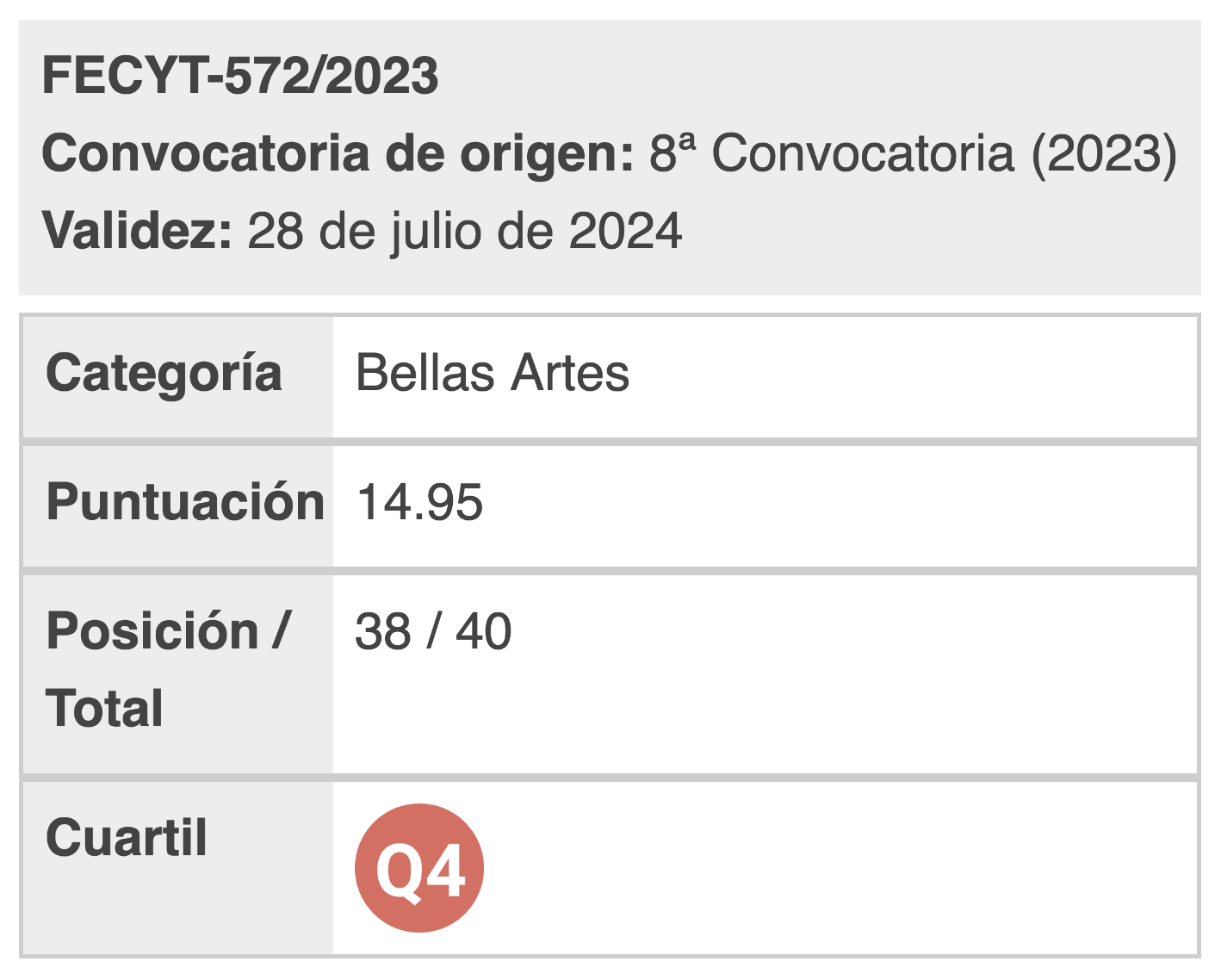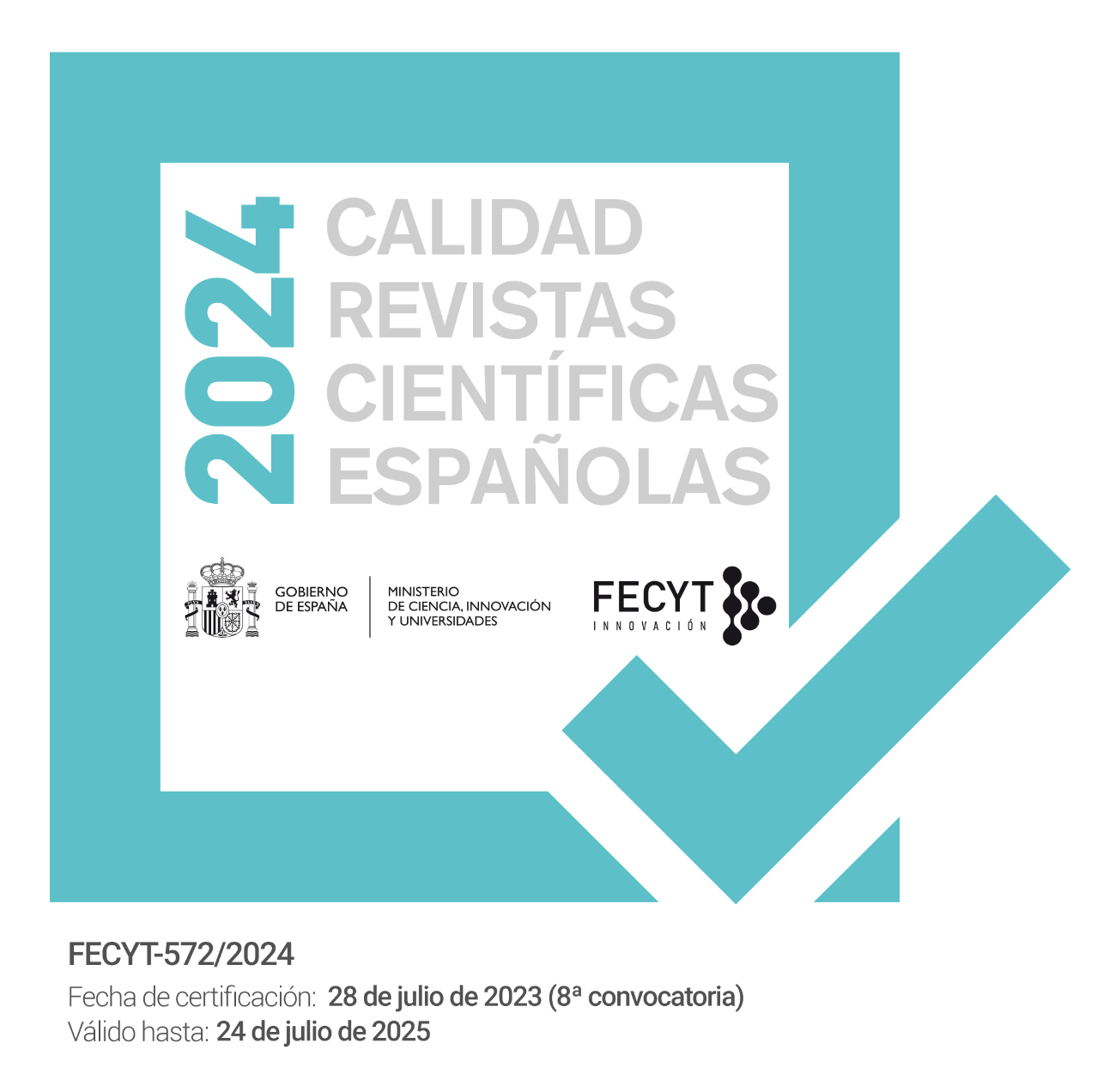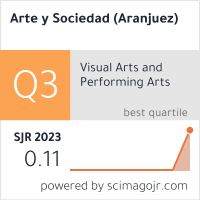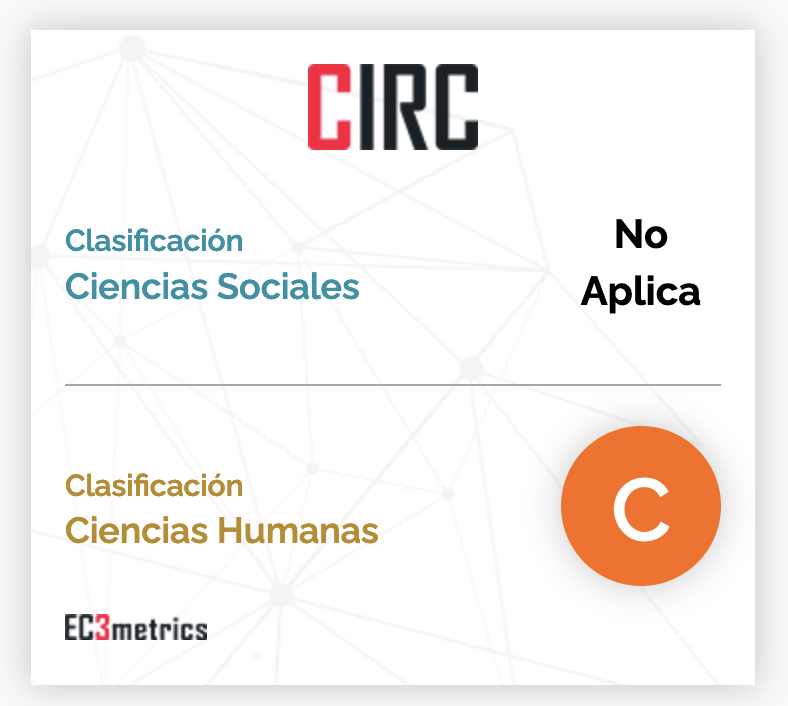Photographic Iconopgraphy
Birdhouses in a carved stone window in Alcántara (Cáceres), by Remigio Mestre
DOI:
https://doi.org/10.5281/zenodo.8184387Keywords:
Iconography, Iconography; Rural photography; Postcard; Pictorial Genre; Bas-relief., Rural photography, Postcard, Pictorial Genre, Bas-reliefAbstract
We analyse an image by the local photographer Remigio Mestre from Alcántara (Cáceres), whose central motif is a Renaissance window in which two birdcages hang. It is a black and white photograph from the mid-20th century, whose subject matter and aesthetics respond to two guidelines: the postcard style and the tradition of pictorial genre painting. The most relevant aspects of both are considered, such as the interrelationship between monumentality and everyday life or the anthropology underlying the practice of whitewashing, which give the image a singularity, while at the same time giving it a polysemic reading of its meaning (where the heraldic coat of arms can be interpreted as a threat to the birds enclosed by the birdcages) and the work of rural photographers.
References
Barrios Felipe, M., y Sáinz Vidal, E. (2018). Piedad Isla. Fotografía humanista en la Montaña Palentina. Consejería de Cultura y Turismo de la Junta de Castilla y León.
Bazán de Huerta, M. (1991). Eulogio Blasco, Cáceres 1890-1960. Cáceres, Institución Cultural El Brocense.
Clifford, Ch. (1861-1862). A Photographic Scramble through Spain. London: Marion & Co.
Fajardo Caldera, A., Gómez Flores, J. M. (2002). La tarjeta postal en Cáceres (1900-1940). Cáceres: Cicón Ediciones.
Fernández Díaz-Fierros, P. (2022). “Charles Clifford y las fotografías de arquitectura popular en la España de mediados del siglo XIX”. REIA. Revista Europea de Investigación en Arquitectura, 19, 181-192.
García-Manso, A. (2021), “Imágenes de la arquitectura y arquitectura de las imágenes: el cine Colón de Garrovillas (Cáceres) en las fotografías de Wifredo López Vecino”. Tercio creciente, 20, 93-109.
Grados Reguero, J. M. (2018). Los blasones de Alcántara. Madrid, Sindéresis.
López Hurtado, M. (2013). “La tarjeta postal en España: usos y tendencias”. Revista general de Información y Documentación, 23, 437-453.
López Mondéjar, P. (1997). Historia de la fotografía en España. Barcelona: Lunwerg.
Lorenzo, S. (2022). “El tamborilero de Alcántara que espantaba pájaros tocando una lata”. En Diario Hoy, 26-06-2022. Badajoz: Grupo Vocento. Recuperado de: https://www.hoy.es/caceres/tamborilero-alcantara-espantaba-20220626075732-nt.html (fecha de consulta 23-01-2023).
Martín Nieto, D. (2007). El hospital de la Piedad de Alcántara en el siglo XVI. El retablo desaparecido del escultor Guillén Ferrant y del pintor Juan Flores. Alcántara (Cáceres): Ayuntamiento de Alcántara.
Mestre Hurtado, R. (1999). Viveiro: Memoria fotográfica de medio século. Lugo: Seminario de Estudos Terra de Viveiro.
Mestre Hurtado, R. (2000). Alcántara en blanco y negro. Lugo: Edición del autor.
Muro Castillo, M. (1999). “La fotografía en Extremadura. Tránsito del siglo XIX al XX”. Revista de Estudios Extremeños, 55, 137-168.
Muro Castillo, M. (2000). Fotografía en Extremadura hasta 1951. Editora Regional de Extremadura.
Pena Castro, M. J. (2020). “La cultura popular española en las fotografías de Ruth Matilda Anderson: Representaciones del pasado y relecturas digitales”. Boletín de Literatura Oral, 3, 87-102.
Pérez Gallardo, H. (2010). “La arquitectura española a través de los fotógrafos extranjeros del siglo XIX”. Reales Sitios. Revista del Patrimonio Nacional, 186, 22-37.
Pérez Simón, S. (2020). “Retratismo rural ambulante en Sierra de Gata”. En Rodríguez Becerra, S., y Valadés Sierra, J. M. (edd.), La cultura vivida: Homenaje al profesor Javier Marcos Arévalo. (pp. 359-384) Badajoz, Fundación CB.
Sáenz Samaniego, S., Arbeláez Zapata, A. L., y Maier Allende, J. (edd.) (2017). Catálogo de Fotografías de Antigüedades y Monumentos de la Real Academia de la Historia (2 vols.). Agencia Estatal del Boletín Oficial del Estado.
Serrano Ruiz, T. (2020). “De la fotografía de Clifford y Laurent a la tarjeta postal de Hauser y Menet en Valladolid”. En Holguera Cabrera, A., Prieto Ustio, E., y Uriondo Lozano, M. (edd.), Coleccionismo, mecenazgo y mercado artístico: Orbis Terrarum. (pp. 579-593) Universidad de Sevilla.
Vega de la Rosa, C. (2017). Fotografía en España (1839-2015): historia, tendencias, estéticas. Madrid: Cátedra.
Vivas Moreno, A., Nuño Moral, M.V., y Rubiano Montano, P. (2020). “Los recursos documentales fotográficos en Extremadura”. En Fernández Bajón, M. T., y Villaseñor Rodríguez, I. (edd.), Retos y tendencias de la investigación hispano-mexicana en Ciencias de la Información y de la Documentación. (pp. 144-160) Universidad Complutense.

Published
How to Cite
Issue
Section
License

This work is licensed under a Creative Commons Attribution 4.0 International License.
You are free to:
Share — copy and redistribute the material in any medium or format.
Adapt — remix, transform, and build on the material for any purpose, including commercial.
Attribution — You must properly acknowledge the authorship, provide a link to the license, and indicate if any changes have been made.
You may do so in any reasonable manner, but not in any way that suggests that you endorse or receive any endorsement by the licensor for your use.
No additional restrictions — You may not apply legal terms or technological measures that legally restrict you from doing what the license allows.



























